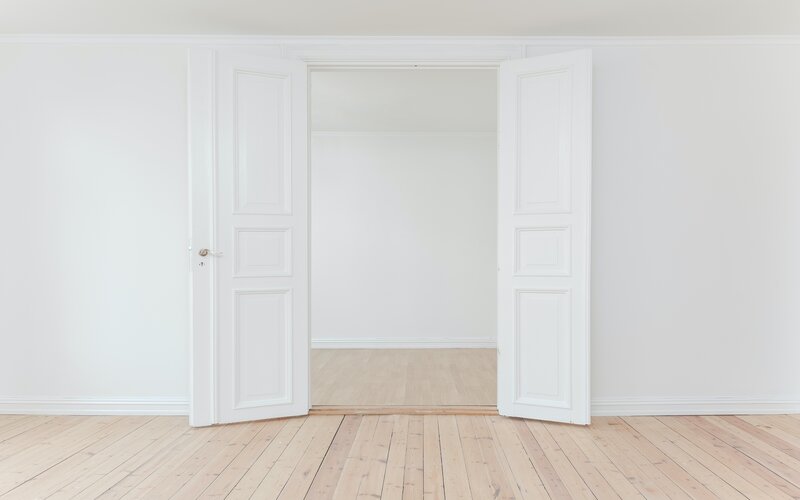For many people, saving enough for a home deposit is the biggest barrier to buying property. People often recommend saving up 20% deposit to avoid paying the costly lenders mortgage insurance (LMI), but that's easier said than done. As of July 2024, the median property price in Australia was $794,000. That means a deposit of nearly $159,000 - more than 150% of the average full time salary.
But what if there's another way?
OwnHome is presenting a new pathway to home ownership for those Aussies with strong income, but meagre savings. Funded by the Commonwealth Bank, OwnHome allows aspiring home buyers to borrow the funds needed for a home deposit - all the way up to 20% of the property's value.
Since launching this Australian-first service in October 2023 (prior to that, OwnHome operated under a rent-to-own model) OwnHome has received more than 15,000 applications - underscoring the demand for such a credit product.
The startup's CEO and co-founder James Bowe says OwnHome aims to help budding Aussie homeowners who are seeing "the goalposts moving further and further out of reach."
"The reality is that it's becoming almost impossible to save that 20% deposit and stamp duty," Mr Bowe told the Savings Tip Jar podcast.
"As a society…we're seeing homeownership become increasingly hereditary…who your parents are is becoming way more important than how capable you are of servicing or affording a mortgage."
"OwnHome, very simply, is a solution that offers borrowers a low deposit pathway to homeownership."
How OwnHome works
An OwnHome Deposit Boost Loan can be up to 20% of the value of the property you are buying. It needs to be used in conjunction with a separate loan (the remaining 80%) from a participating lender, with both loans repaid simultaneously.
Let's say you're looking at a property for $500,000. You've got $25,000 in savings, so you're working with a 5% deposit. You would therefore get a $75,000 loan from OwnHome to get you to a 20% deposit (thus avoiding LMI), then borrow the remaining $400,000 from a participating lender.
OwnHome Deposit Boost Loans can be all the way up to 20% of the property value. This means that in theory, you could buy a property with no deposit: you would borrow 80% from a participating lender and the remaining 20% from OwnHome. In general, lenders don't write loans higher than 95% LVR, so if you are looking to buy with a deposit smaller than 5%, OwnHome is one of very few possible avenues.
Eligibility
The minimum income will vary from customer to customer, but as a rough guide, Deposit Boost Loans may be best suited to borrowers with an annual income above $125,000, or a couple earning more than $200,000 combined. That's because borrowers earning less could qualify for the government's first home guarantee, which may offer a more affordable path to homeownership.
There are a few other eligibility requirements:
-
You'll need a credit score of at least 600
-
The property needs to be in or close to a metropolitan area
-
OwnHome does not lend for properties in the NT or Tasmania
-
You must be an Australian citizen or permanent resident
-
Can only be used for owner occupied or first investment home purchase
Cost
The Deposit Boost Loan's interest rate is generally between 12.5-13.5% p.a, with higher rates for higher LVR loans.
OwnHome also charges an upfront low deposit premium (LDP) of 1.1-2.2% of the value of the property. If you are not putting up any deposit of your own, you are charged the full 2.2%, while if you are putting up a 10% deposit yourself, you pay 1.1%. There is a floor of $9,900 for a LDP, which is the minimum you'll be charged regardless of the loan size.
This LDP covers both the loan and the home buying assistance that OwnHome provides (details below). There are no hidden ongoing fees and there are also no break costs if you decide to refinance.
Features
Deposit Boost Loans have a 15 year loan term. You aren't locked in - you can refinance at any time. OwnHome also offers a complementary home buying service. That means access to a buyer's agent who can assist with finding properties, negotiating with sellers and organising building/pest inspections, among other things.
Participating lenders
You can only use a Deposit Boost Loan with participating lenders. For example, Commonwealth Bank (despite being a stakeholder) will not lend to you if you are borrowing your deposit from OwnHome.
Participating lenders currently include:
-
Macquarie Bank
-
ING
Is OwnHome worth it?
OwnHome is ideally suited to aspiring home owners with a strong income, but limited savings. In fact, if you are looking to borrow above 95% of the property value but don't qualify for the home guarantee scheme, it might be your only option, besides a helping hand from generous family members.
"60% of successful first-time buyers rely on direct support from the bank of Mum and Dad," Mr Bowe told the podcast.
"If you don't choose your parents…what are your options to homeownership that don't require coming up with a full 20% deposit plus stamp duty? That's where OwnHome steps in."
The Low Deposit Premium will generally also be significantly lower than equivalent LMI premiums, which could also be critical for those looking to buy without strong savings - every penny counts as far as up front costs are concerned, particularly when you add stamp duty on top.
For borrowers with a larger deposit, you'll need to crunch the numbers to see whether you'll come out on top long term. Let's return to the example from the top: you're buying a property worth $500,000 and have a $25,000 deposit (5%). You're looking for a home loan with Macquarie, which means you have two options (rates correct as of July 2024):
-
Option A: Borrow 95% ($475,000) of the property value at 7.19% p.a
-
Option B: Borrow 80% ($400,000) at 6.19% p.a, then the remaining 15% ($75,000) from OwnHome at around 13% p.a (this is an estimated rate).
Here's how your costs would breakdown for both:
| Option A | Option B | ||
|---|---|---|---|
| Upfront cost (LMI/LDP). Not including stamp duty. | You would likely need to pay an LMI premium of around $14,972 | You'll be charged a Low Deposit Premium of around 1.7% of the property price, which works out to be $8,500. In this case, you'd pay the floor rate of $9,900 | OwnHome works out to be about $5,000 cheaper |
| Repayments* | Assuming a 30 year loan term, you would pay $3,221 a month. | On the 80% LVR Macquarie Loan, monthly repayments would be about $2,447.28. On the OwnHome portion (assuming a 13% rate and 15 year loan term), monthly repayments would be $949. In total, that means $3,396.28 each month. | The repayments on the 95% LVR loan with Macquarie are $175.28 less each month. |
*Calculated using the Savings.com.au repayments calculator
In this example, you would save just under $5,000 in upfront costs choosing OwnHome. However, you'd be paying an extra $175.28 each month once the loan began. After about two and a half years into the loan, this would offset those initial savings.
Once again, it depends on your situation. If you don't have large savings to draw upon, that extra $5,000 could well be the difference between being able to buy or not. In that case, being able to buy sooner could be well worth the extra repayments - the property might increase in value much more than the extra $175 per month in repayments. If you have a strong income, you might also be able to make overpayments and pay down the OwnHome portion of the loan sooner, which would reduce your interest bill.
On the other hand, you might decide that it's worth copping the extra upfront costs to save money on your repayments each month.
This example is purely illustrative. If you're considering a loan with OwnHome, you should compare plenty of home loans to find the best 80% LVR loan to combine with it, as well as the strongest alternative low deposit loan option. Once you've got that, you should crunch the numbers yourself, much like the above, to understand exactly what you're choosing between.

OwnHome Co-Founder James Bowe - Image Supplied.
Other low deposit home loans
There are other options if you're looking for a home loan with a low deposit.
Low deposit home loans
There are still plenty of lenders that are willing to write high LVR loans. High LVR loans usually mean higher interest rates, as well as paying for LMI, but there are still plenty of products out there with competitive rates. In general however, low deposit home loans still won't go past 95% LVR.
Read more: 95% LVR loans
Government schemes
Each year, the three Home Guarantee Schemes help eligible Aussies to buy with a small deposit while avoiding LMI. The Government basically acts as guarantor for up to a certain percentage of the loan, which makes the loan safer in the eyes of the lender and negates the need for LMI. There are 50,000 places each year available on the First Home (35,000), the Family Home (5,000) and the Regional Home (10,000) guarantees. There are different eligibility criteria for each and you'll need to earn below a certain income threshold, but its worth exploring if you think you might qualify.
Advertisement
Buying a home or looking to refinance? The table below features home loans with some of the lowest interest rates on the market for owner occupiers.
| Lender | Home Loan | Interest Rate | Comparison Rate* | Monthly Repayment | Repayment type | Rate Type | Offset | Redraw | Ongoing Fees | Upfront Fees | Max LVR | Lump Sum Repayment | Additional Repayments | Split Loan Option | Tags | Row Tags | Features | Link | Compare | Promoted Product | Disclosure |
|---|---|---|---|---|---|---|---|---|---|---|---|---|---|---|---|---|---|---|---|---|---|
5.79% p.a. | 5.83% p.a. | $2,931 | Principal & Interest | Variable | $0 | $530 | 90% |
| Promoted | Disclosure | |||||||||||
5.74% p.a. | 5.65% p.a. | $2,915 | Principal & Interest | Variable | $0 | $0 | 80% |
| Promoted | Disclosure | |||||||||||
5.84% p.a. | 6.08% p.a. | $2,947 | Principal & Interest | Variable | $250 | $250 | 60% |
| Promoted | Disclosure |
Image by Sidekix Media via Unsplash

Ready, Set, Buy!
Learn everything you need to know about buying property – from choosing the right property and home loan, to the purchasing process, tips to save money and more!
With bonus Q&A sheet and Crossword!






 Denise Raward
Denise Raward


 Brooke Cooper
Brooke Cooper
 Harrison Astbury
Harrison Astbury

